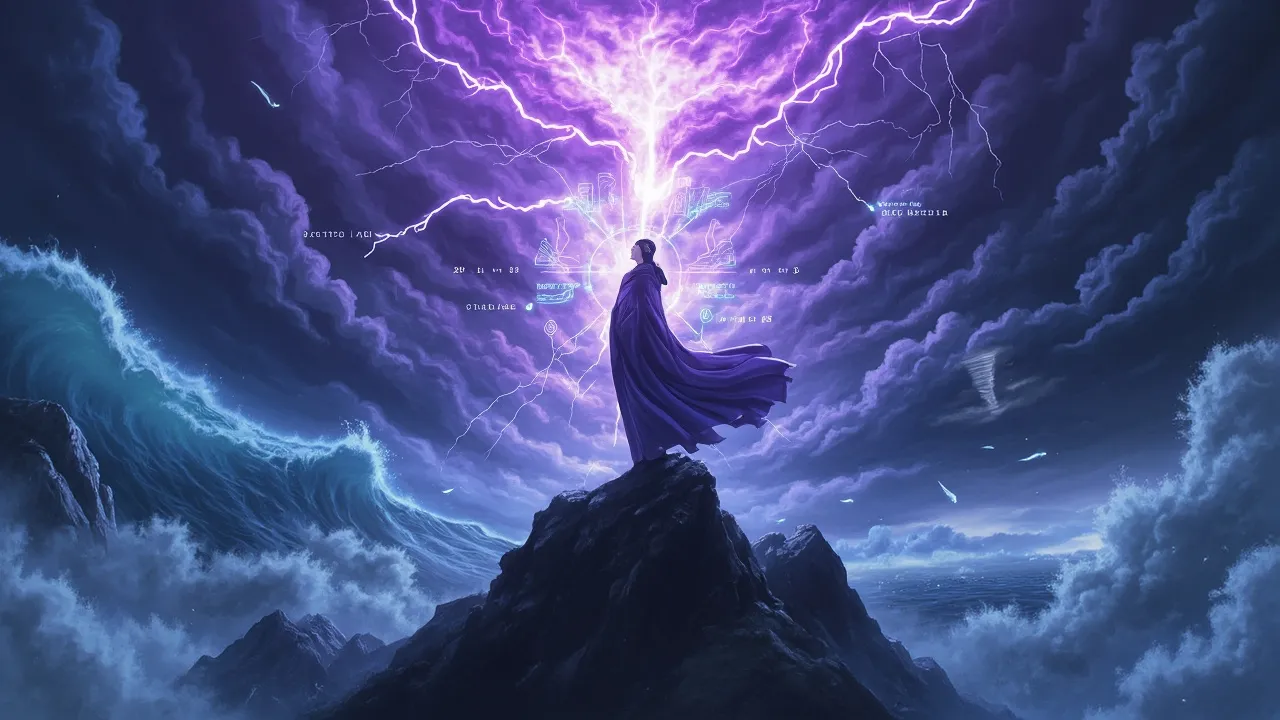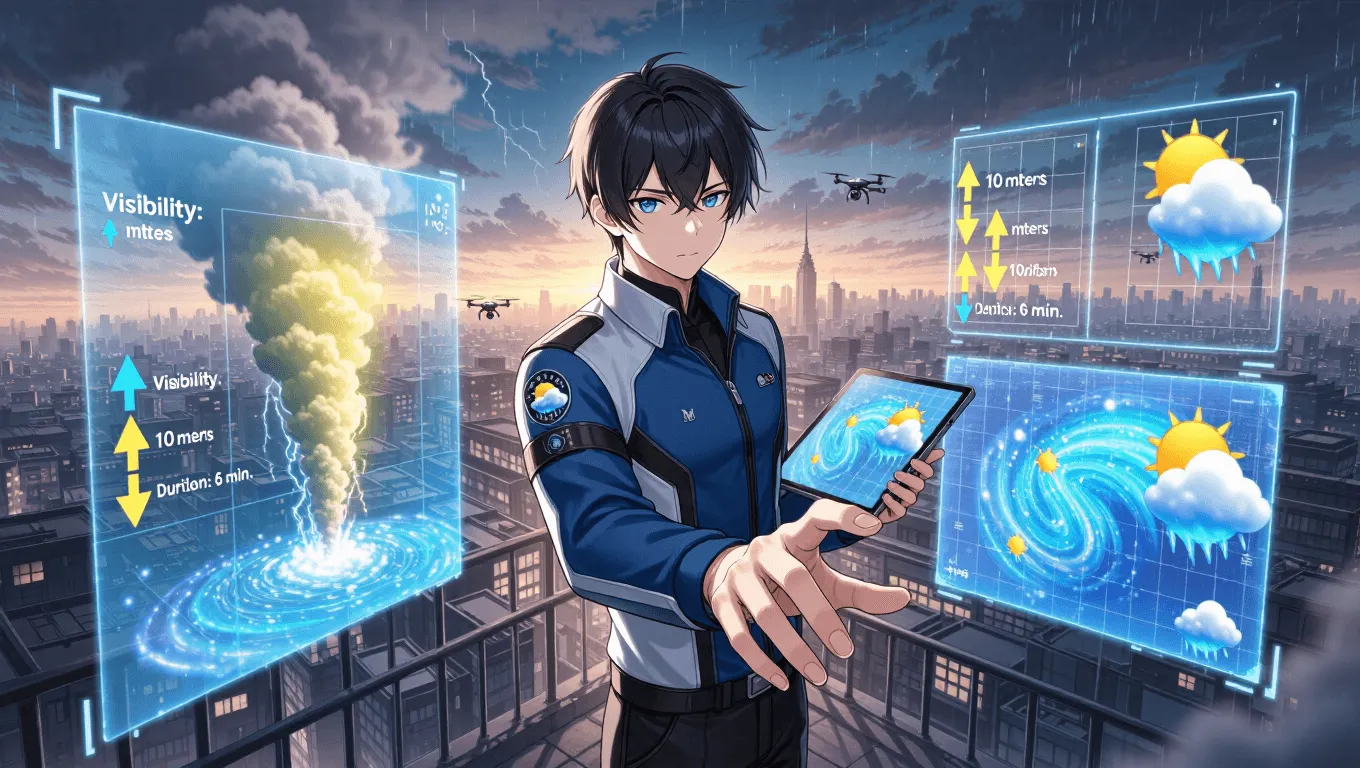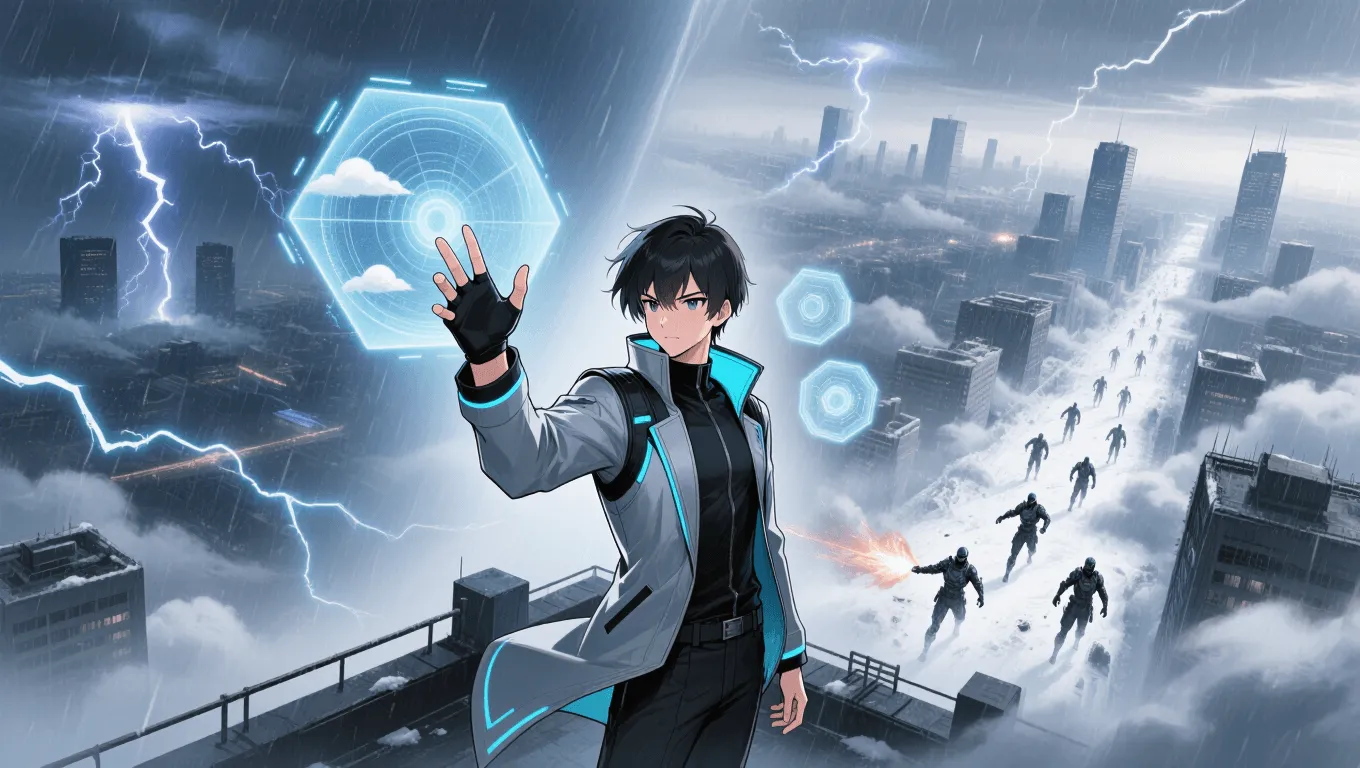Weather Forecasting Superpower Guide

Weather Forecasting Video Demo 🎬
Table of Contents
- Weather Forecasting Video Demo 🎬
- What Is Weather Forecasting
- Core Abilities of Weather Forecasting
- Application / Tactical Advantages in Combat
- Level: Level 1 🏙️, Level 2 🌇, Level 3 🌃
- Limitations of Using the Weather Forecasting
- Weakness Against What Other Superpowers
- Synergistic Power Combos
- Known Users
Weather Forecasting is a perception-based superpower that allows a character to sense, analyze, and predict atmospheric conditions with extraordinary accuracy. Unlike raw weather control (meteorokinesis), Weather Forecasting centers on understanding rather than shaping the sky—turning barometric cues, wind patterns, humidity gradients, and thermal shifts into tactical foresight. In roleplaying terms, it’s a high-value intelligence skill that converts environmental data into decisive advantages. Explore related abilities on the superpower wiki or discover fresh concepts with the random superpower generator.
What Is Weather Forecasting
Weather Forecasting enables a user to anticipate meteorological events—from light showers to supercell thunderstorms—before they form or reach the battlefield. At its most basic, it functions like hyper-accurate meteorology. At advanced tiers, it overlaps with precognition and probability mapping, allowing the user to foresee weather-dependent outcomes: where lightning will likely strike, when fog will roll in, or how a heat dome will evolve over hours.
Key ideas associated with this superpower include situational awareness, microclimate analysis, dynamic pattern recognition, and predictive modeling. Some variants incorporate empathic “listening” to the atmosphere, while others rely on instantaneous data synthesis—like a living Doppler radar. While this power does not inherently manipulate weather, it frequently pairs with aerokinesis, hydrokinesis, or thermokinesis to translate forecasts into action.
Core Abilities of Weather Forecasting
Hyper-acute Atmospheric Sensing
Users read subtle cues—pressure drops, wind-shear changes, dew point shifts, cloud morphology, and aerosol content—to infer what the sky will do next. This may feel like a second sense for fronts, jet streaks, or temperature inversions.
Real-time Microclimate Mapping
Beyond regional outlooks, the user can map hyperlocal conditions: which alley will channel gusts, where fog will pool near riverbanks, or how heat radiates off rooftops to create thermals. In urban encounters, this microclimate awareness determines line-of-sight, stealth, and movement.
Storm Prediction & Track Projection
The power computes storm trajectories, likely strike zones, and timing windows for hail, downbursts, or flash floods. Advanced users can estimate lightning probability and convection strength minutes—or hours—ahead of normal instruments.
Probabilistic Foresight
At higher proficiencies, Weather Forecasting behaves like bounded precognition. The user parses atmospheric chaos into scenario trees with weighted probabilities—anticipating not just what the weather could be, but how adversaries and terrain will interact with it.
Hazard Anticipation & Early Warning
The user senses imminent hazards—sudden squalls, dust devils, whiteouts, or ice slick formation—and relays actionable warnings to allies. This functions like a “danger sense” keyed to environmental threats.
Data Fusion & Battlefield Intel
Some versions allow passive integration of environmental data: ocean currents, soil moisture, pollen counts, or smoke plumes. The power condenses this into a clear picture of visibility, acoustics, and scent dispersal—vital for scouting and ambush detection.
Application / Tactical Advantages in Combat
Ambush Timing and Positioning
Knowing when fog will thicken or rain will mask noise lets a team strike under cover. Forecasted crosswinds inform projectile choices; predicted downpours can disable thermal optics or dampen explosive ignition.
Movement, Evasion, and Pursuit
Forecasted gusts suggest when drones or fliers will struggle. Anticipating ice or sand drift identifies treacherous routes for enemies—and safer paths for allies. In chase scenes, the user steers the team through windows of clear visibility.
Countering Elemental Offense
Weather-based attacks (lightning calls, blizzard bursts, sandstorms) become predictable. The forecaster pre-positions grounding lines against lightning, shields entrances before squalls, or reroutes allies away from incoming sleet.
Resource Optimization
Teams conserve energy, ammo, and gear by synchronizing actions with the environment—setting traps before a pressure trough, deploying smoke when wind will carry it, or planning aerial insertions between wind shear spikes.
Strategic Communications and Sensors
Predicted interference—ionospheric noise, rain fade, or ducting—helps schedule comms bursts and place repeaters. Snipers leverage barometric and wind projections for first-round hits at extreme ranges.
Level: Level 1 🏙️, Level 2 🌇, Level 3 🌃
Level 1 — Skilled Observer

-
Scope: Neighborhood to town scale; 1–6 hours lead time.
-
Accuracy: Rough windows (e.g., “rain likely within the hour,” “winds will pick up at dusk”).
-
Tools: Visual cloud reading, tactile wind sense, basic barometric intuition.
-
Gameplay Impact: Grants advantage on checks to avoid weather hazards; mild buffs to stealth or ranged accuracy when timing shots between gusts.
Level 2 — Microclimate Analyst

-
Scope: Block-by-block mapping; 10–60 minute precision windows; can tag updrafts, outflow boundaries, and wind corridors.
-
Accuracy: High-confidence short-term calls (e.g., “fog bank will drop visibility to 10 meters for 6 minutes”).
-
Add-ons: Limited probabilistic foresight; rough lightning propensity; basic flood-risk readouts.
-
Gameplay Impact: Enables timed ambushes, safe route plotting, drone flight planning, and suppression of enemy visibility at key moments.
Level 3 — Synoptic Savant

-
Scope: City to region; integrates fronts, jet-level dynamics, and terrain feedbacks.
-
Accuracy: Exceptional; can sequence multiple weather windows and leverage scenario trees.
-
Add-ons: Near-precognitive hazard alerts (downburst, microburst, whiteout), lightning strike corridor predictions, and acoustic/olfactory dispersion modeling.
-
Gameplay Impact: The team fights “with the sky,” routinely forcing enemies into poor visibility, crosswinds, or cold snaps while preserving optimal conditions for themselves.
Limitations of Using the Weather Forecasting
Chaos and Uncertainty
Atmospheric systems are chaotic. Even superhuman forecasts remain probabilistic. Rapidly evolving convective storms, volcanic ash, or magic-driven fronts can reduce reliability.
Interference from Other Powers
Reality warping, probability manipulation, or direct meteorokinesis can invalidate predictions. A foe who changes the sky mid-fight collapses the forecaster’s scenario tree.
Range, Duration, and Resolution
Not all users can scale from microclimates to synoptic patterns. Some predict only minutes ahead; others lack fine resolution in urban canyons or mountainous terrain.
Cognitive Load
Inundated by variables—wind shear, lapse rates, aerosols—the user may suffer fatigue or analysis paralysis. Long operations can impose concentration checks or cooldown timers.
Data Dependency
Variants that rely on sensory fusion (from satellites, drones, or smart dust) lose performance when sensors are jammed or destroyed.
Weakness Against What Other Superpowers
Probability Manipulation
If an adversary skews likelihoods, previously “low-probability” weather outcomes become dominant, breaking forecast validity.
Illusion and Sensory Deception
Illusions that fake cloud forms, wind signatures, or heat mirages lead to false inferences. Similarly, invisibility plus microclimate spoofing can misdirect the user.
Time Manipulation
Time acceleration, rewind, or stasis decouples the forecast from the actual timeline. Predictions anchored to real-time become obsolete instantly.
Reality Warping & Chaos Magic
Directly rewriting atmospheric laws (or entropy) overwhelms predictive frameworks. Forecasts fail when physics itself is fluid.
Elemental Nullification
Fields that flatten thermal gradients or suppress convection erase the very signals the user reads, rendering the power largely inert.
Information Denial
EMP bursts, sensor jamming, and anti-scrying wards reduce data fidelity, cutting the forecasting horizon and accuracy.
Synergistic Power Combos
Aerokinesis + Weather Forecasting
Forecasts set the playbook; aerokinesis executes it. Identify a natural outflow boundary, then nudge it to arrive thirty seconds earlier, stacking wind penalties on opponents.
Hydrokinesis + Weather Forecasting
Anticipate river surge or coastal fog, then shape water and mist to enhance concealment, conduct electricity, or hamper enemy mobility.
Thermokinesis + Weather Forecasting
Use predicted inversions and heat islands to bend mirage lines or stabilize air for precision shots. Subtle thermal tweaks amplify already favorable conditions.
Electrokinesis + Weather Forecasting
Combine lightning corridor predictions with targeted strikes, raising accuracy and safety while avoiding friendly fire.
Geokinesis/Biomancy + Weather Forecasting
Forecast rainfall to time seed dispersal or mud creation for traps. Tree canopies and terrain funnels gain tactical value when winds are predictable.
Clairvoyance/Precognition + Weather Forecasting
Cross-check atmospheric scenario trees with glimpses of potential futures for near-flawless hazard avoidance and strike timing.
Technopathy/Infokinesis + Weather Forecasting
Fuse drone swarms, LIDAR, and pressure sensors into a living mesh network. The user commands a portable “mobile weather service” for battlefield control.
Known Users
-
Storm (Ororo Munroe) — While renowned for weather control, many depictions highlight her innate atmospheric awareness and predictive acuity, allowing her to anticipate fronts and lightning behavior to protect allies. Learn more about the character on the Marvel character page.
-
Weather Wizard (Mark Mardon) — Typically a manipulator, but some portrayals emphasize meteorological insight that guides his tech-based storms, implying pre-attack forecasting discipline.
-
Percy Jackson — As a son of Poseidon, he often senses maritime weather and ocean-driven squalls, which can be framed as intuitive forecasting in nautical settings.
-
RPG/Anime Archetypes — Rangers, air mages, and druidic seers frequently gain environmental foresight perks—predicting fog banks, safe crossings, or lightning windows to safeguard their parties.
By mastering Weather Forecasting, a character transforms the battlefield into a living playbook—reading the sky’s intent and acting at exactly the right moment. For a broader look at related abilities and evolutions, browse the superpower wiki or spark campaign ideas with the random superpower generator.
